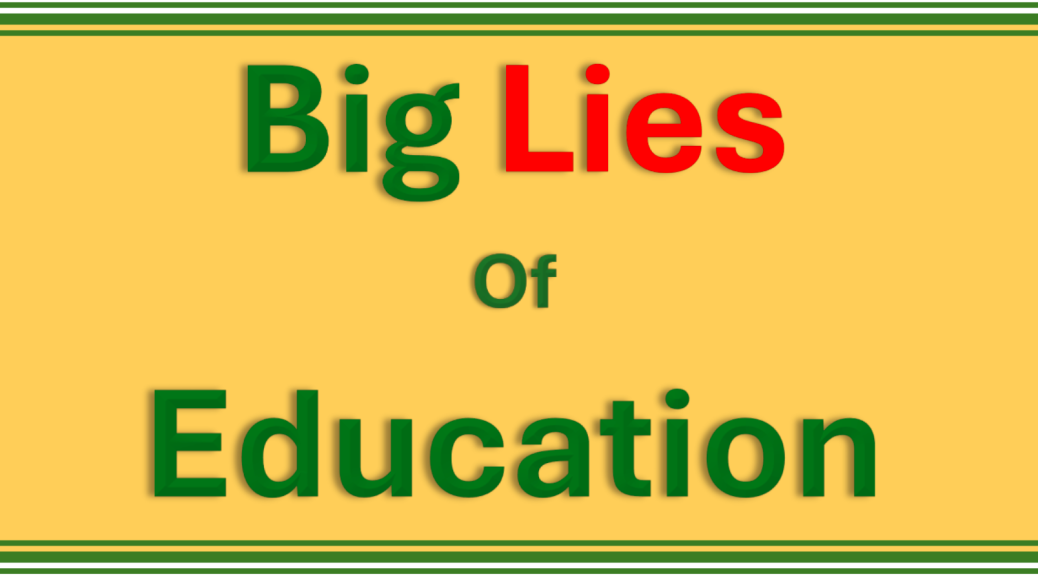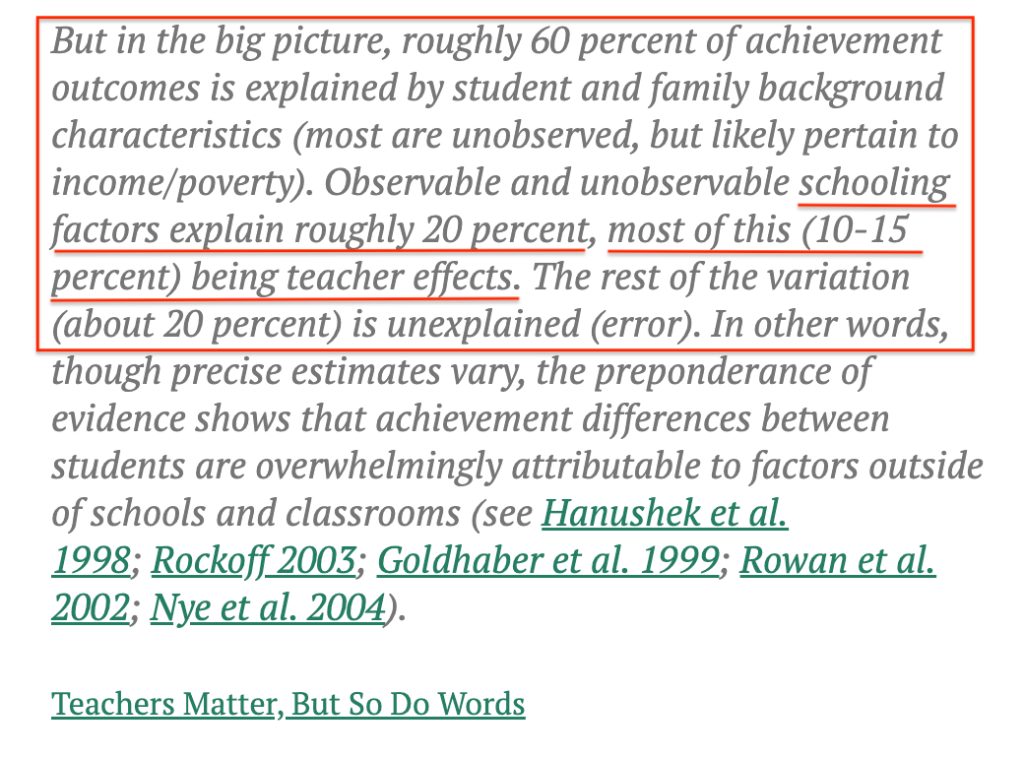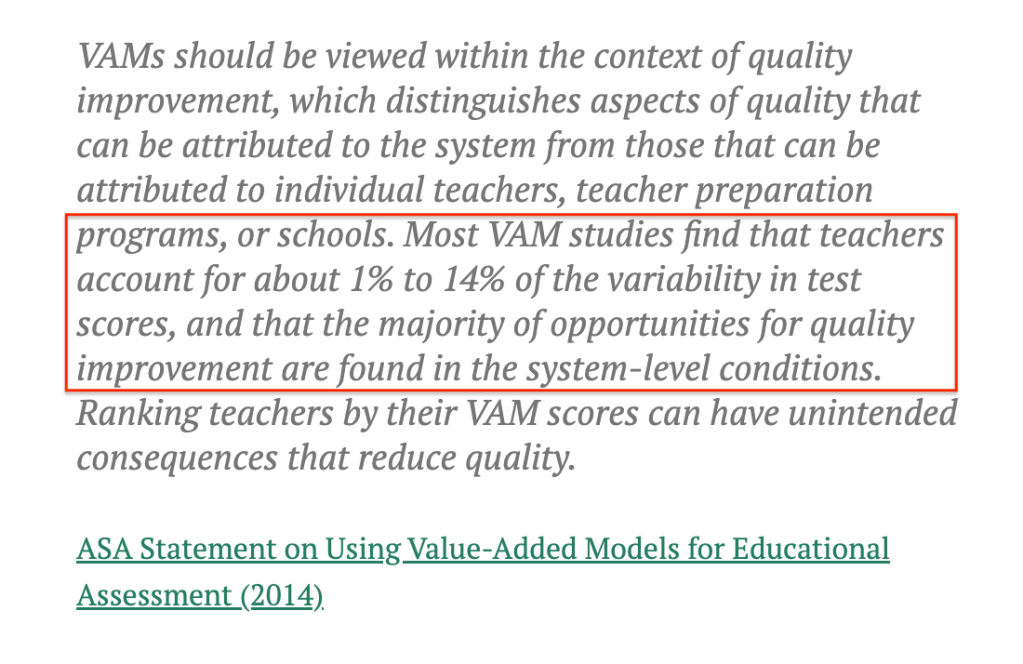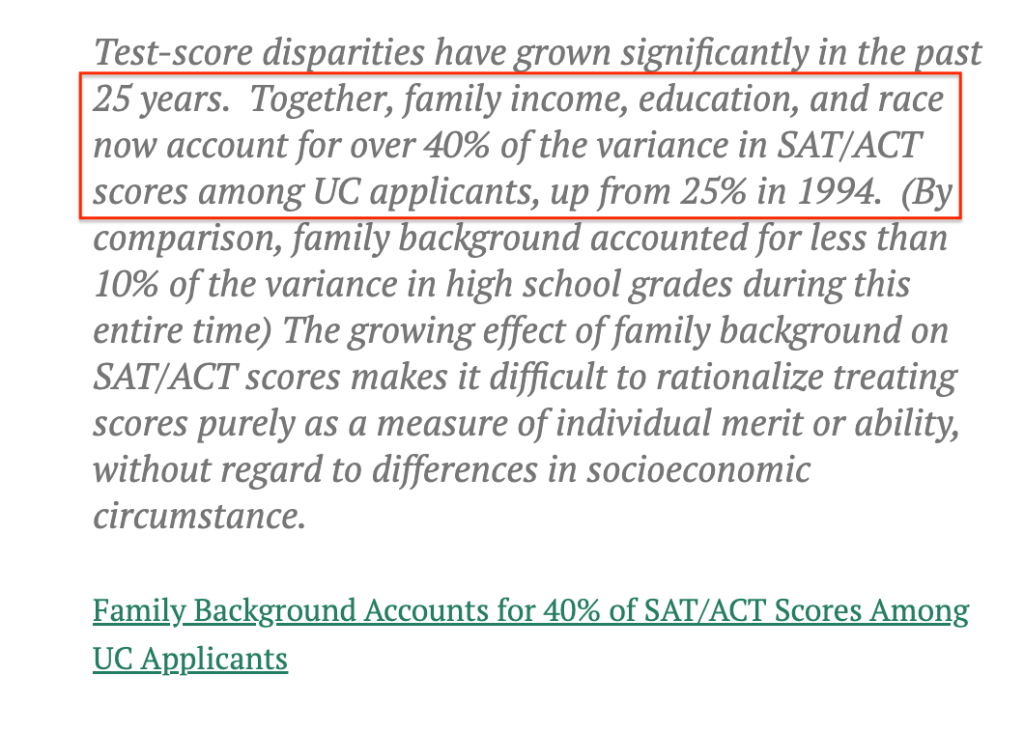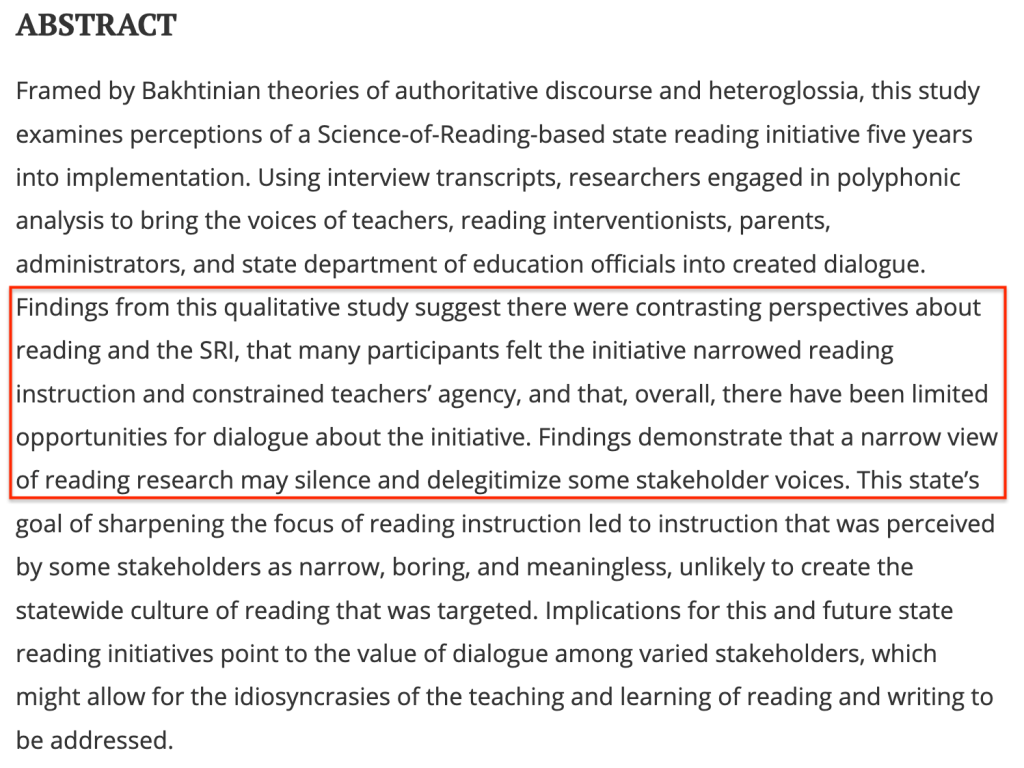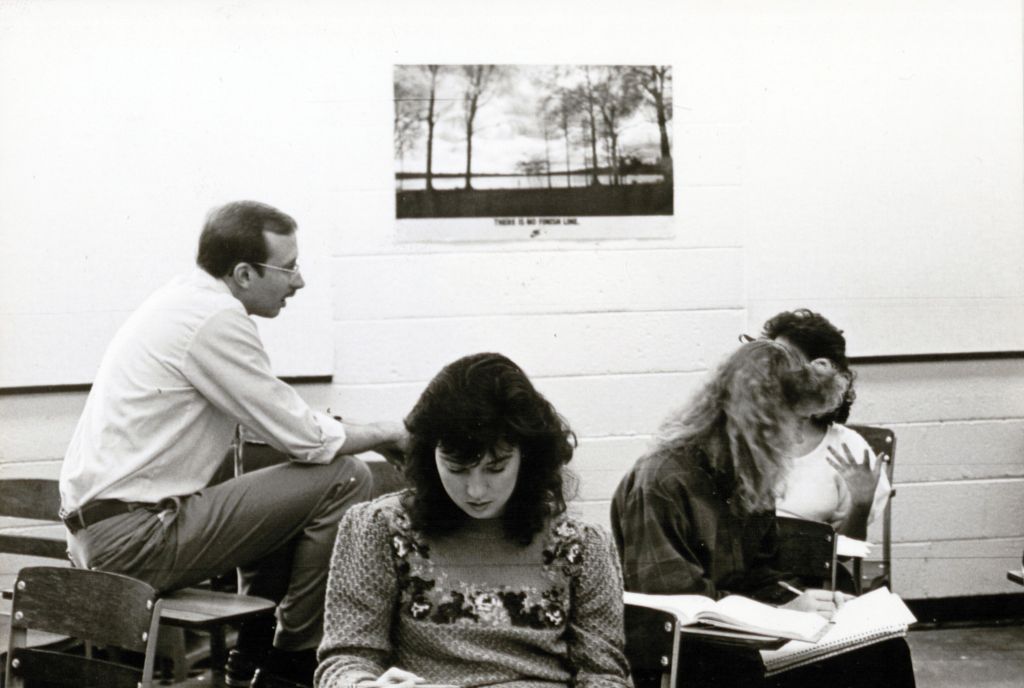While cycling with a new acquaintance, I navigated through the usual questions about how long I have been a professor, and then, after I mentioned that I was a high school English teacher for 18 years before moving to higher education, the follow up about which was easier, or which I preferred.
On this ride and during the conversation, I realized I am quickly approaching the tipping point in my career since I am starting my 17th year as a professor, just one year away from having been a professor for as long as I was a high school teacher—the identity I remain strongly associated with about myself professionally.
Being a writer has held both aspects of my being an educator together, but K-12 teaching and being a professor in higher education (especially my role as a teacher educator) are far more distinct than alike.
However, and most disturbing, K-12 teachers and college professors are increasingly sharing disillusionment with being educators as K-12 teachers are fleeing public education and fewer are majoring/certifying to teach while quit lit has become a phenomenon throughout higher education.
My journey as an educator offers some unique insight since I have nearly two decades in each contexts, K-12 and higher education. As well, my work in higher education remains directly connected to K-12 classroom teaching (I am a teacher educator and spend time observing in public schools as well as having professional and personal relationships with public school teachers).
For a majority of my time as a high school teacher, I was department chair, and several of those years included being a coach. My days were often very long, starting at 7:30 AM and ending on match days as late as 11 PM.
As a high school English teacher, I taught around 100 students or more at a time and had five classes a day, usually 2-3 preps. Since I focused on teaching my students to write, I responded to about 4000 essays and 6000 journals a year.
In 1995, I entered a doctoral program, an EdD in curriculum and instruction; I continued to work full-time and even maintained my adjunct work at local colleges. The doctorate experience was sobering since every other candidate I encountered was seeking a doctorate to leave the K-12 classroom—except me.
I completed my degree and was still resolute I would teach high school until I retired, and then maybe seek something at the university level. My pay bump for the advanced degree was, in fact, quite good.
The summer of 2002 was not something I planned, but when a position opened at a nearby university (a position held by my former high school teacher and mentor), I applied with no real expectations about making the transition so soon.
After a flurry of on-campus interviewing, and then a disheartening negotiation about salary (the opening offer was a $17,500 pay cut), I agreed to leave my high school job for higher education. The final pay was still $6000 below my public school salary, but the university promised I would have overloads and summer work to make up the difference.
So I sit here this summer about to start my 17th year as a college professor, a full professor with tenure. I have learned a great deal.
First, the prestige and respect shift from K-12 teaching to higher education was stunning, especially since I taught high school for 4 years while I had a doctorate; the degree was not the key factor in how people viewed and treated me.
Professors receive immediate respect and assumptions about our expertise that K-12 teachers never experience. My ability to publish, for example, in local, state, and national newspaper magically appeared once I could list my university instead if my high school when querying.
Next, and related, that respect divide cannot be disassociated from the impact of gender: More than 3 of 4 K-12 teachers are women, but the largest group of professors is men, and that imbalance is even greater at the higher ranks, where men are the majority. The university where I teach, for example, is well over 60% male faculty.
Possibly the greatest differences, however, between K-12 teaching and being a professor are expectations for labor and what counts as your professional obligations.
By the time I left K-12 teaching, I was wearing a wrist brace; my right hand was nearly immobile from marking essays, and to be honest, teaching English as I knew I should [1] was nearly unmanageable against the rest of my responsibilities and having a family or any sort of recreational life.
Burn out is a common term associated with K-12 teaching, but since teaching doesn’t appear to be manual labor (such as construction) or isn’t associated with production (most of us balk at seeing our students as widgets), those who have not taught fail to recognize the physical and psychological wear that comes with teaching.
I joke, though it isn’t funny, that being stared at by 100 or so students per day is stunningly exhausting. But most K-12 teachers have no real time to eat alone (or with only other adults), to go to the restroom, or to do with their work day anything other than grade, respond to student work, plan, or address the never-ending minutia of bureaucracy that is teaching (standards, meetings, paperwork, etc.).
Teaching—even just lasting past the first 3-5 years—two or three decades is a herculean task in surviving a career; too many teachers out of self-preservation learn to work in auto-mode, mailing in a profession because it has simply erased your humanity.
Along with professional respect, I gained a great deal of professional autonomy (which K-12 teachers have almost none) and, most of all, time. A heavy semester for me is teaching several courses three days a week, usually M, W, F and from about early morning to mid-afternoon.
Except for meetings (and higher education has an ugly committee and departmental meetings problem), I have multiple days a week to devote to my professional commitments other than teaching, for me, being a writer.
And as a professor, I have never fretted about going to the bathroom, and making sure I eat, calmly, is nearly never a struggle.
I also teach with almost no direct evaluative surveillance or oversight (which can be a bad thing, of course); this I note because it reduces the unnecessary stress of teaching in a high-stakes accountability environment that allows you no professional autonomy (what it means to be a K-12 teacher).
I must stress that a great deal of pettiness and an inordinate amount of unhealthy practices still plague higher education—the tenure and promotion process along with the faculty evaluation process are steeped in sexism and inequity, for example.
And the cancer that is high-stakes accountability and reducing education to work-preparation is creeping, no galloping, toward and eventually over higher education.
When I first took my university position, I was surprised at how out of touch professors were with K-12 teaching and the negative impact of the standards and high-stakes testing movement. I, in fact, warned my colleagues that the accountability movement would some day come to colleges and universities so it was in their own self-interest to begin fighting the movement in K-12 schools.
But they didn’t listen.
Higher education isn’t called the Ivory Tower for nothing.
So this brings me to why anyone would be an educator—especially in 2018 when the consequences weighed against the rewards for being a K-12 teacher or a college professor are tipping mightily in the wrong direction.
To teach, at any level, for many of us is something like a calling. Just as one day in my first year of college I recognized I am a writer (I did not choose that), I know myself to be a teacher.
Despite my introversion, and my discomfort with people, crowds, I am never more relaxed than in a classroom with students. We are there with common purpose and we mostly are seeking ways to be a community.
These are things I believe in, things I trust about the possibility of humans being better than we have been so far.
To be an educator, then, is not the problem in that the profession itself, whether K-12 or in higher education, is compelling and deeply fulfilling.
The problem is that to be a teacher in the U.S. is colored by the cultural negative attitude toward labor, being a worker, and the power of collective workers against the wishes of corporatism.
Teaching at all levels has continually been corrupted by the urge to reduce public institutions to private entities driven by corporate paradigms.
K-12 teachers have always worked in environments that isolate us, overwork us so that we cannot resist, and have gradually become less and less unionized. Much of higher education (because of the tenure and promotion process as well as departmental politics) has also allowed competition to trump collaboration.
It is not so much why anyone would be an educator, but why those of us who teach at any level have allowed our profession to be dismantled, devalued, and dehumanizing.
And finally, teachers and professors are regularly policed for being political, admonished for being activists. And to that we must ask, in whose interest is this political call for teachers and professors to not be political?
Isolated, silenced, and depoliticized, we educators are failing a profession that deserves better.
In solidarity, raising our voices, and actively exercising our politics, we educators can resurrect one of the most valuable acts of labor humans can embrace.
The latter is why anyone would be an educator.
[1] The martyr/missionary dilemma.



